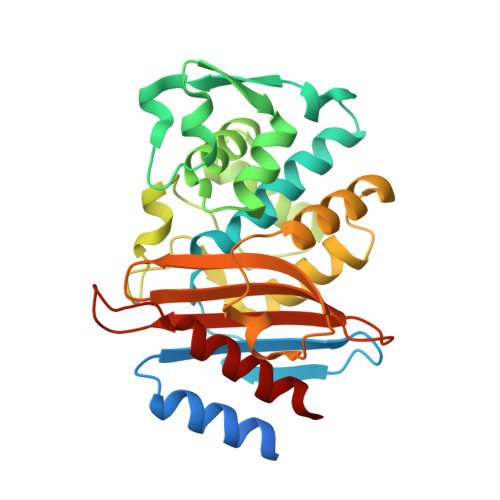Structural Insight into the Mechanism of Inhibitor Resistance in CTX-M-199, a CTX-M-64 Variant Carrying the S130T Substitution.
Cheng, Q., Xu, C., Chai, J., Zhang, R., Wai Chi Chan, E., Chen, S.(2020) ACS Infect Dis 6: 577-587
- PubMed: 31709791
- DOI: https://doi.org/10.1021/acsinfecdis.9b00345
- Primary Citation of Related Structures:
5ZB7, 6ITY, 6J25, 6J2B, 6J2K, 6J2O - PubMed Abstract:
The smart design of β-lactamase inhibitors allowed us to combat extended-spectrum β-lactamase (ESBL)-producing organisms for many years without developing resistance to these inhibitors. However, novel resistant variants have emerged recently, and notable examples are the CTX-M-190 and CTX-M-199 variants, which carried a S 130 T amino acid substitution and exhibited resistance to inhibitors such as sulbactam and tazobactam. Using mass spectrometric and crystallographic approaches, this study depicted the mechanisms of inhibitor resistance. Our data showed that CTX-M-64 (S 130 T) did not cause any conformational change or exert any effect on its ability to hydrolyze β-lactam substrates. However, binding of sulbactam, but not clavulanic acid, to the active site of CTX-M-64 (S 130 T) led to the conformational changes in such active site, which comprised the key residues involved in substrate catalysis, namely, Thr 130 , Lys 73 , Lys 234 , Asn 104 , and Asn 132 . This conformational change weakened the binding of the sulbactam trans -enamine intermediate (TSL) to the active site and rendered the formation of the inhibitor-enzyme complex, which features a covalent acrylic acid (AKR)-T 130 bond, inefficient, thereby resulting in inhibitor resistance in CTX-M-64 (S 130 T). Understanding the mechanisms of inhibitor resistance provided structural insight for the future development of new inhibitors against inhibitor-resistant β-lactamases.
- State Key Lab of Chemical Biology and Drug Discovery, Department of Applied Biology and Chemical Technology, The Hong Kong Polytechnic University, Hung Hom, Kowloon, Hong Kong.
Organizational Affiliation:


















